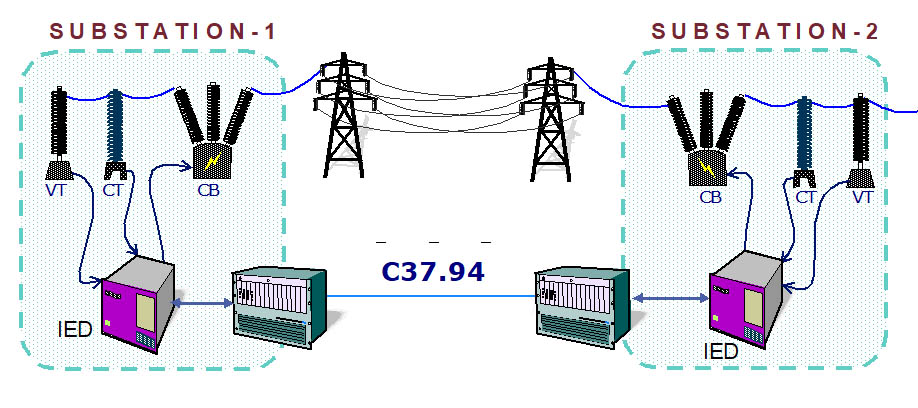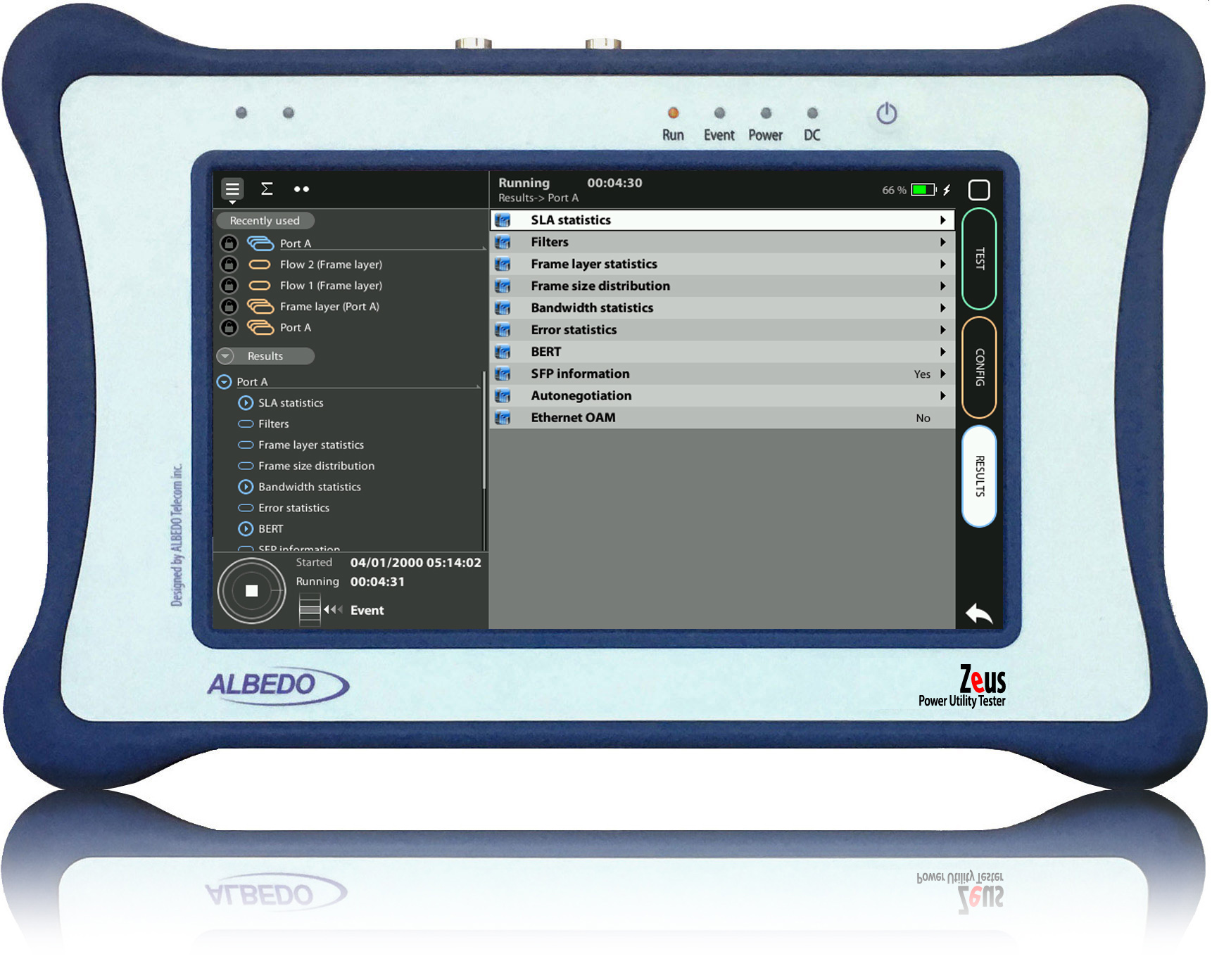Round Trip Delay over C37.94
Round Trip Delay test over C37.94 is critical in teleprotection applications, where timely and accurate message communication is essential for the proper operation of protective relays and the quality of the power service.
BARCELONANOV.17.2023
About C37.94 protection
IEEE C37.94 is a standard for teleprotection communication and control in power utilities, focusing on the communication aspects that ensure reliable operation of protection relays. Teleprotection involves the use of communication channels to transmit signals between relays to coordinate the strategy for isolating faults in the power system, including substations and distribution lines.

Fig 1. Protection schemes are based on the measurement of electric values and a communication link.
C37.94 defines the formats and protocols to be used in the telecommunications network, including data frames, transmission rates and other requirements that enable the use of protection schemes in power systems. This has always been considered a critical system to facilitate interoperability between substation connections of generation plants and the reliability power service.
Ensuring the standard implementation
Ensuring that equipment supports the standard is key to the reliability and interoperability of the system, so conformance testing verifies that equipment from different manufacturers can work together seamlessly, promoting a more robust and reliable power infrastructure. All engineers involved in the deployment or maintenance of C37.94 teleprotection should review and follow the manufacturer’s test procedures to ensure conformance testing.

Fig 2. C37.94 line protection.
Field engineers can use ALBEDO testers to check new C37.94 installations or to troubleshoot tele-protection relays and multiplexers using features such as Bit Error Rate Test (BERT), G.821, Event Analysis/Generation, Optical Power Meter One-Way/Round-Trip Delay, etc. to help engineers verify the protection system that prevents outages in a substation.
Round Trip Delay test
Round Trip Delay (RTD) test over C37.94 is fundamental for assure teleprotection systems. This delay is critical in teleprotection applications, where timely and accurate message communication is essential for the proper operation of protective relays and the quality of the power service. Here are some reasons why:
- Trip Accuracy: The timely and accurate detection of faults is crucial for initiating protective actions therefore RTD test helps ensure that the communication system does not introduce excessive delays that could impact the trip time of protective relays. Excessive delays might lead to slower response times during fault conditions.
- Coordination of Protection: Relays need to coordinate their actions to isolate faults then RTD test verifies that the delay between relays is within acceptable limits, ensuring proper coordination and sequence of protective actions.
- Compliance : C37.94 specifies requirements for the permissible delay in teleprotection systems then this test is essential to confirm that the communication equipment meets these standards.
- System Stability: Excessive delays may impact the stability of the system then RTD identifies and mitigatees potential stability issues by ensuring that signals reach their destination within a specified time.
- Performance: RTD provides insights into the performance of the network facilitating the identification of latency issues that may affect the communication between relays and other devices.
- QoS Assurance: The RTD test contributes to the assurance of quality of service in teleprotection communications. It helps maintain a consistent and predictable communication delay, which is essential for reliable and secure operation.
In other words, RTD test over C37.94 is a critical component of teleprotection system testing as it tells if delays are within the operation limits of protective relays and contributing in this way to the reliability of the power system.

Fig 3. Zeus and xGenius equipped with C37.94 interfaces and synchronized by GPS, measure all key parameters including Round-Trip-Delay (RTD) simply using a Physical Loop at one extreme (Configuration 1) or by means of two units (Configuration 2). The result will be exactly the same.
xGenius and Zeus
xGenius and Zeus testers provide in-depth insight into the design, installation, maintenance, troubleshooting and engineering of Smart Grid communications infrastructures. The unit can test Ethernet/IP, PTP, GbE, IRIG-B, T1/E1, G703, C37.94 and GOOSE, SV and MMS protocols. One-way delay testing, supported by GPS, is available on all interfaces. Zeus has a set of programmable filters to capture live traffic at wire speed. You can now analyse GOOSE, SV, MMS and other protocols to decode and store them in PCAP format or calculate propagation delay from local or remote substations.

Fig 4. Zeus the favorite tester of field engineers from Canada to Australia, from Germany to South Africa.
Testing C37.94 with ALBEDO
Using a dual port module over SMF or MMF with a suitable SFP and then a configurable bit rate between 64kbps and 768kbps in 64kbps increments.
Connectors
- Dual port operation over SMF or MMF with suitable SFP
Line
- Transmission clock: Recovered or internally synthesized
- Laser on and off control
Frame
- Unframed or framed operation.
- Frame structure follows IEEE C37.94 section 4.1
- Configurable bit-rate between 64 kb/s and 768 kb/s in steps of 64 kb/s

Fig 5. ALBEDO tester equipped with C37.94 double port module.
Line Analysis
- Frequency (Hz), frequency deviation (ppm)
- Transmitted optical power (dBm), received optical power (dBm)
- Received data rate (kb/s)
- SFP information: transceiver, vendor, model and wavelength
Frame and Pattern Analysis
- ITU-T G.821 performance: ES, SES, UAS, DM. ITU-T G.821 results include pass / fail indications
- Event detection and insertion: LOS, AIS, FAS, RDI (yellow), LSS, ALL0, ALL1, Slip, TSE, bit error, delay


